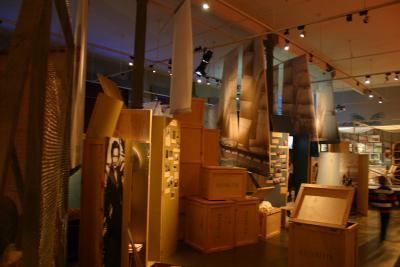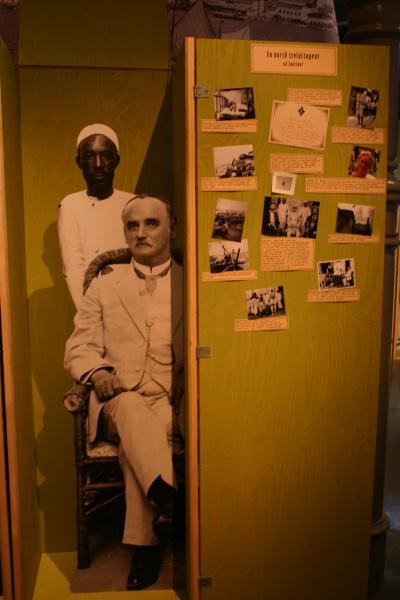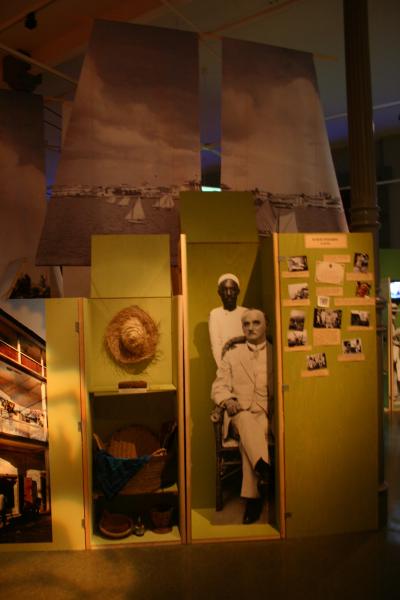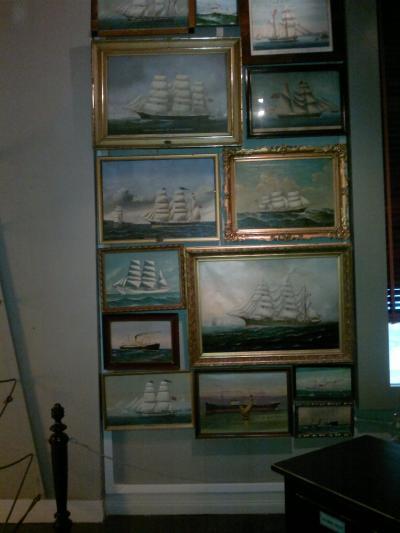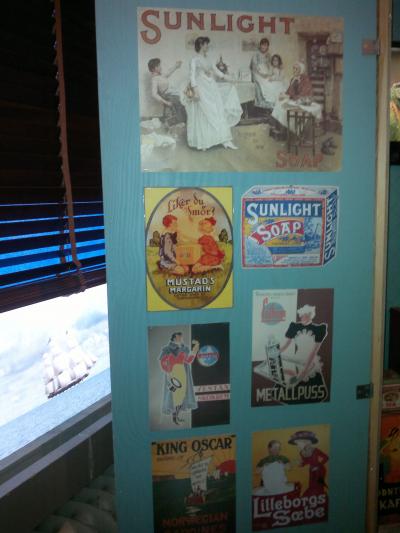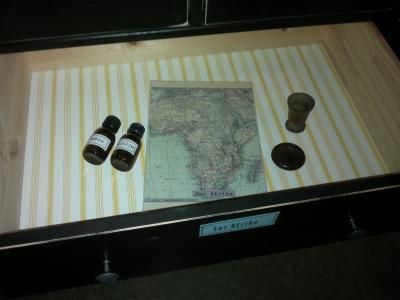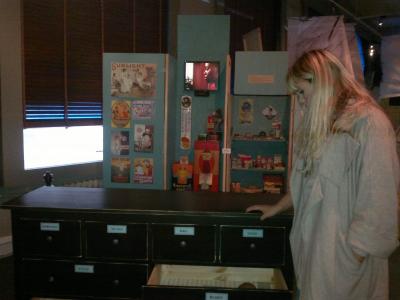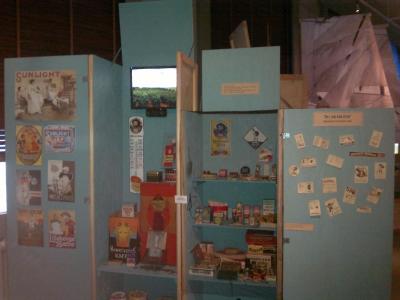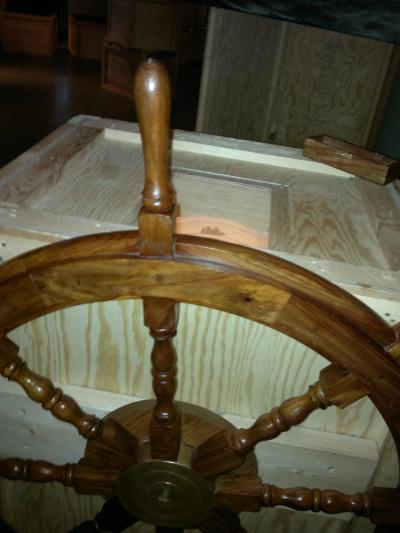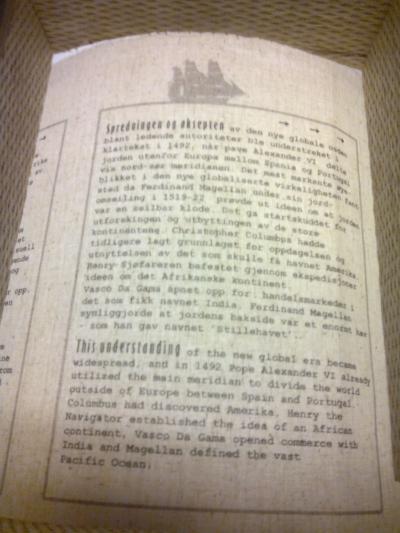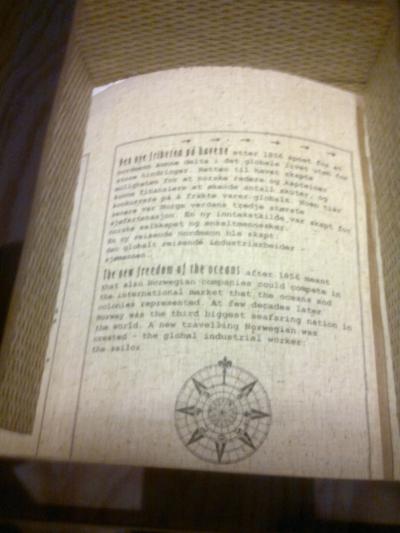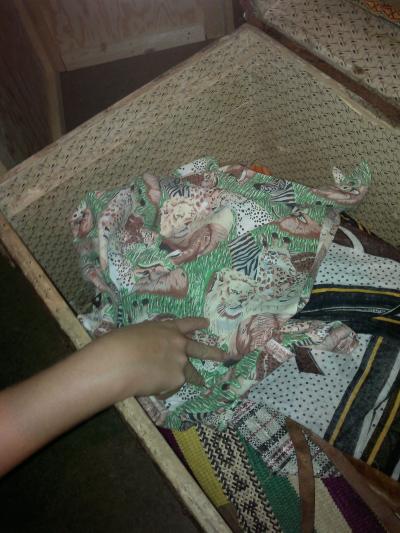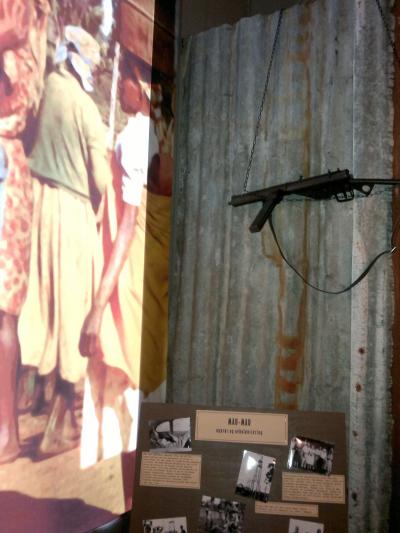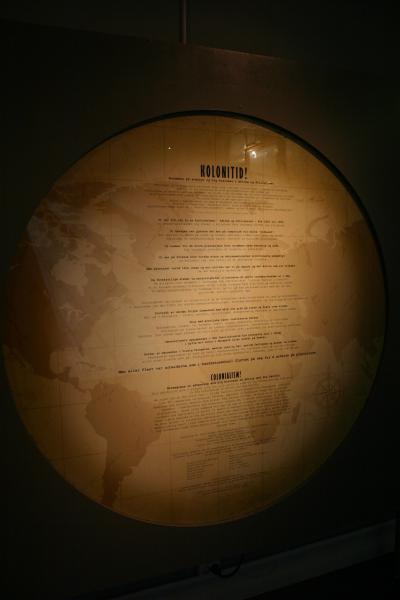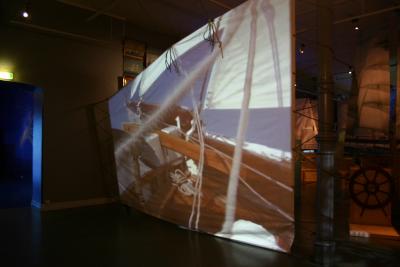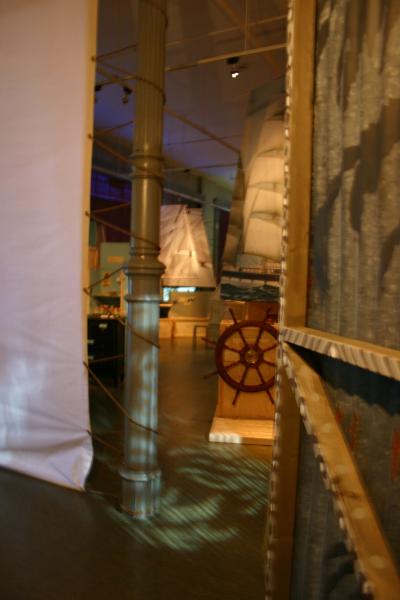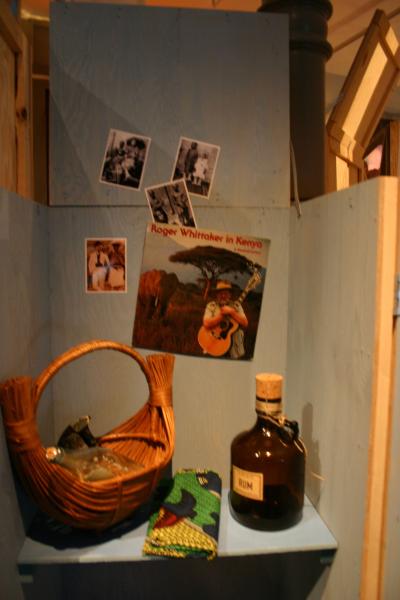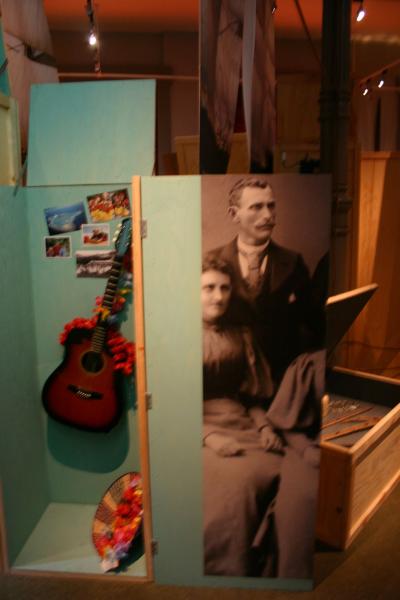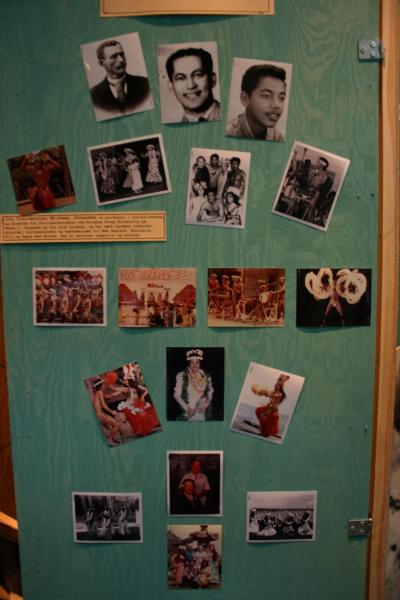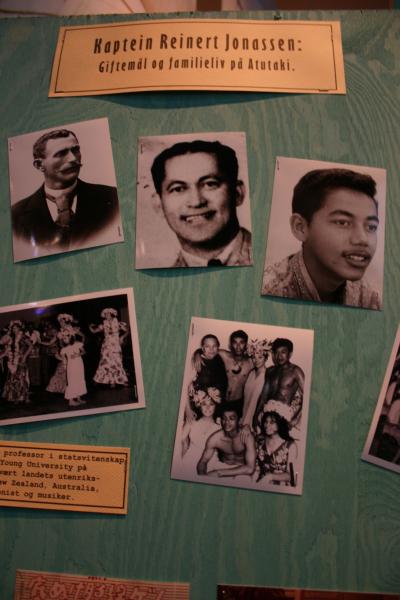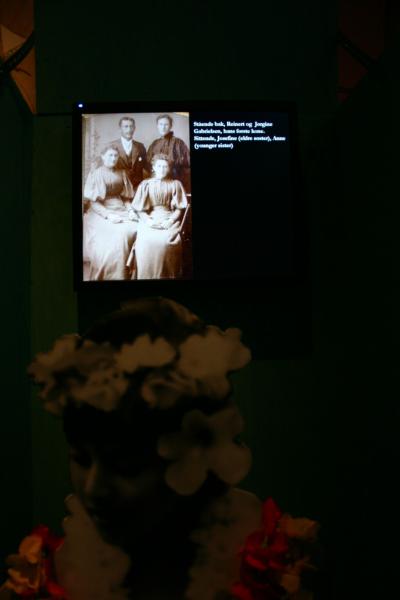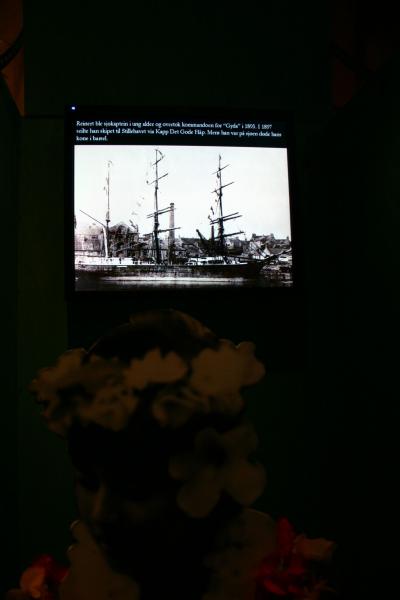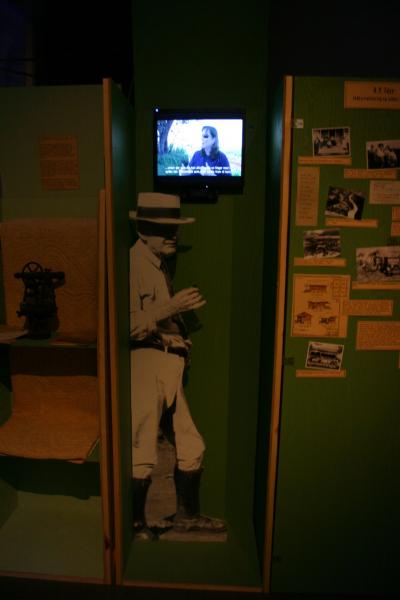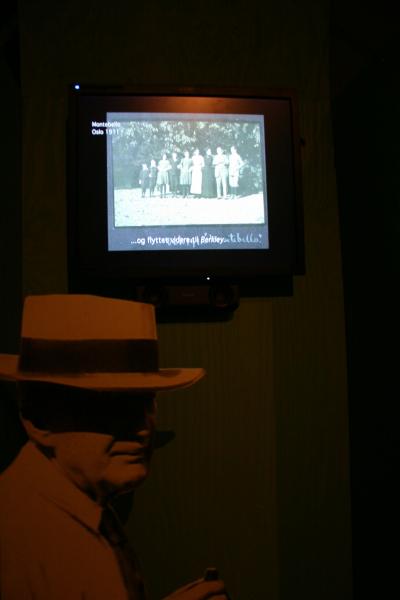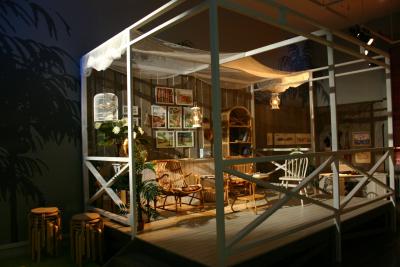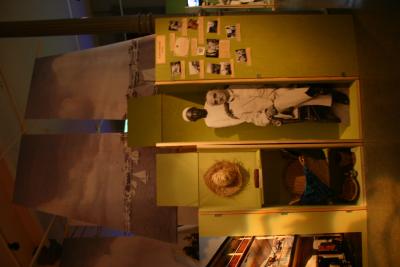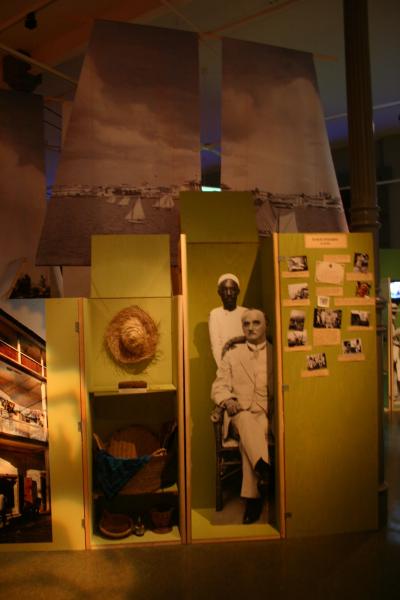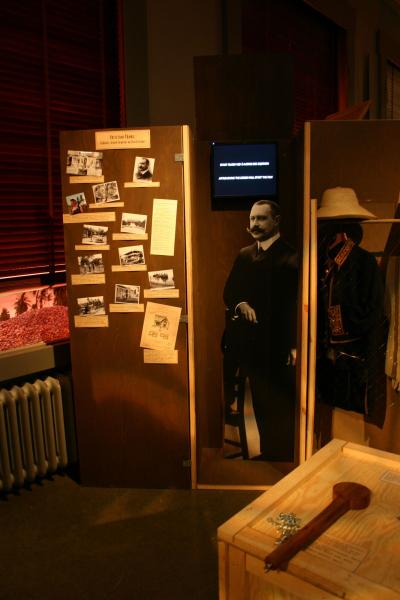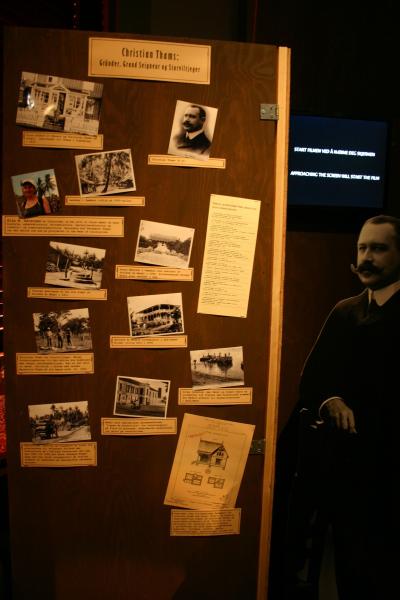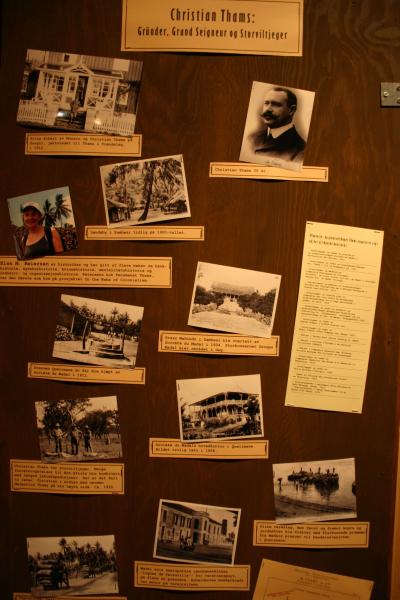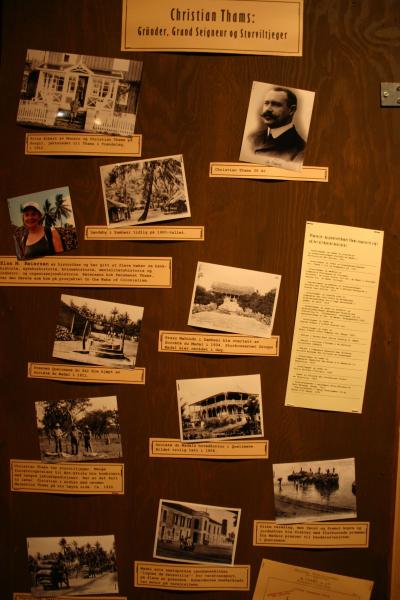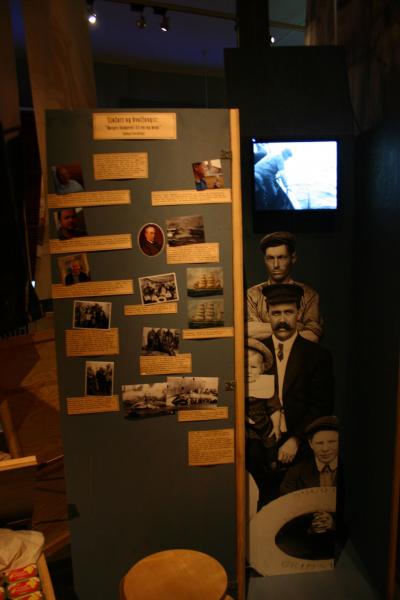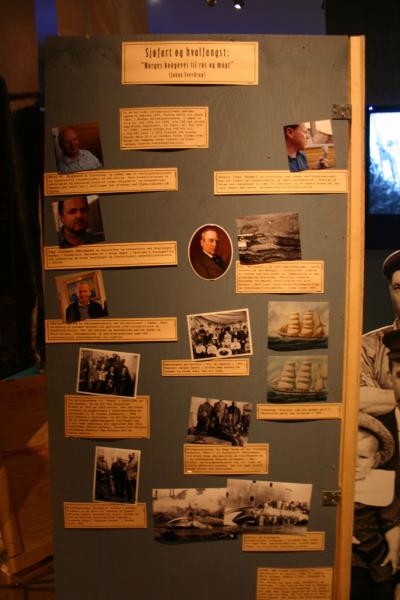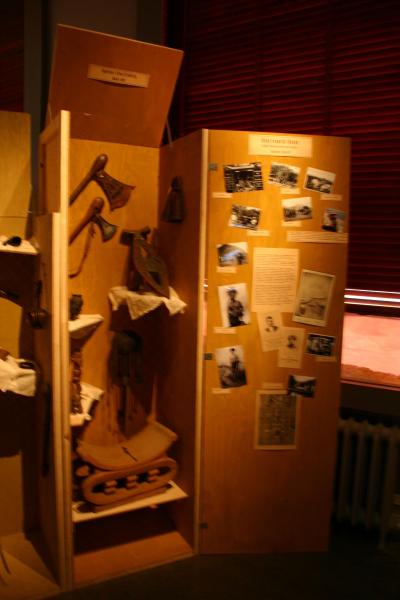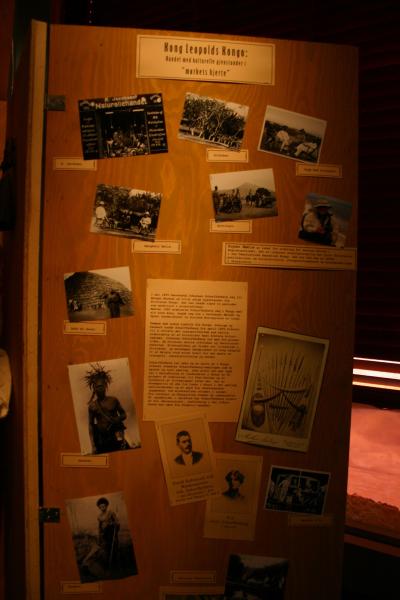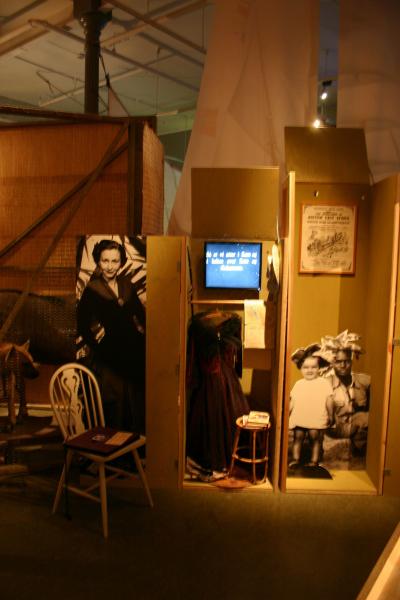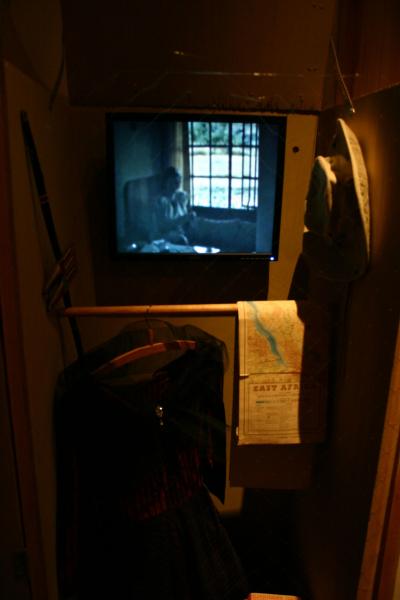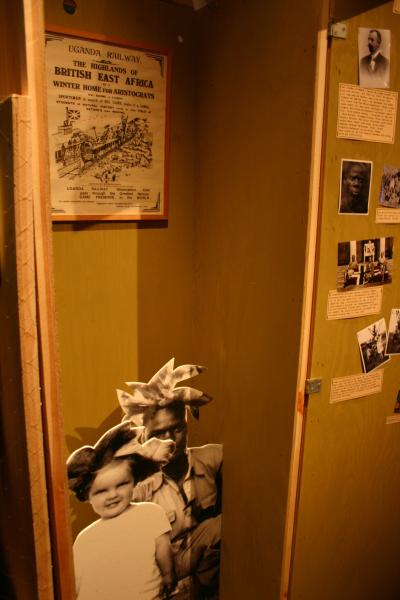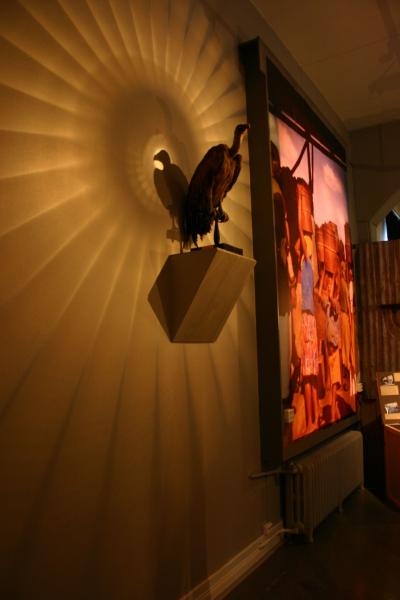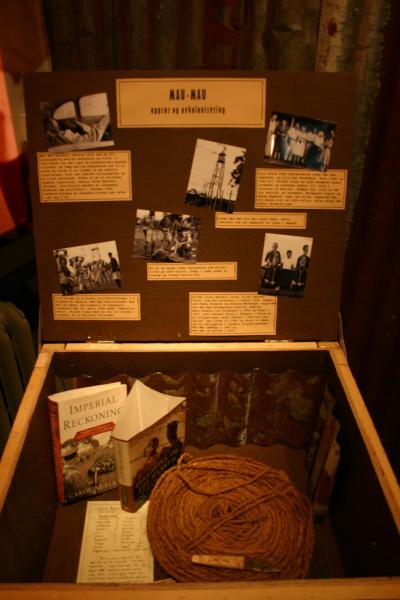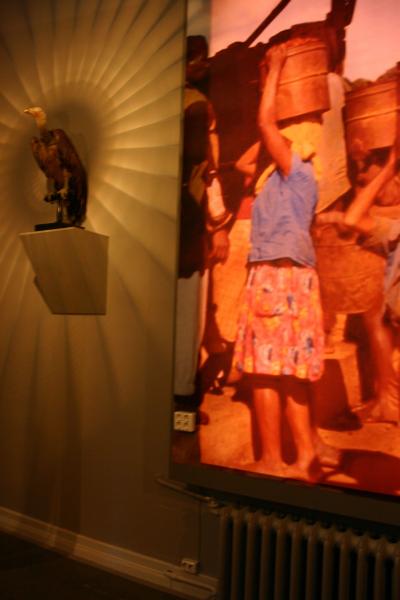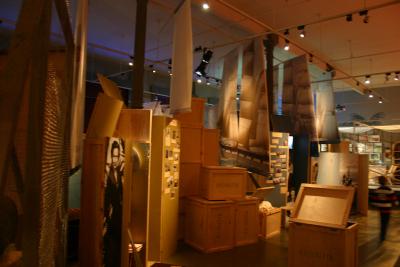Colonial Times in Bergen Museum
A few years ago the University Museum in Bergen opened an exhibition that represented something new in the Norwegian museum context. In one of the old exhibition halls which houses the collection of natural history objects, a group of scholars had removed the traditional museum show cases in glass and polished wood. Among stuffed tigers and elephants they cleared the space for a cultural history exhibition titled Colonial Times: Norwegians on adventure and in big business in Africa and the Pacific. The purpose of the exhibition stated in the introductory text, was to present “glimpses into some of the places where Norwegians were present in colonial times”. As a result of a large, cross-disciplinary research project, the exhibition became a pioneer enterprise in more than one sense. Most notably it represented one of the first attempts of addressing Norwegian colonialism as such.
The exhibition was given a spectacular, conceptual design in which the entire space was transformed into a chaotic harbour area. In this dynamic visual composition, a large number of big wooden transport cases figured as key elements - between ropes and sails with projected images of boats and distant landscape. These cases were intended as symbolic statements – or reflections of how the histories of Norwegians in the colonies only represented short and passing stays in transit.
But each of the cases also carried singular ‘colonial’ stories – about individual Norwegians, the places they arrived at, their meeting with the people at these distant places, and how the places changed their lives. One of them was about the sea captain Oscar Christian Olsen, who in 1895 anchored his sailing ship at the harbour at Zanzibar on the East African Coast. This visit led to the establishment of Olsen’s export agency of wood to Zanzibar.
Olsen’s story is about how a young, fatherless, but gifted and ambitious young man from Norway was given unexpected new possibilities in life through the European colonisation of Africa. This narrative was, as the other case-stories in the exhibition, presented within the frame of an open box.
In an enlarged and silhouette cut from a photographic portrait of Olsen, he is comfortably seated and elegantly dressed in “colonial white” with a native servant in the background. This ensemble was centrally positioned in the box structure. To the left of this portrait, on shelves mounted one of the other walls of the wooden case, a number of objects from the museums ethnographic collections were on display. Among them were a straw hat and some baskets – all locally crafted objects from Zanzibar. However, a number of small photographs were also included in the box display, most of them copies of images in black and white from the Norwegian colonialist’s life and enterprise.
One could find family portraits from Norway, a situation capture from a business celebration, an image of the Norwegian consulate in Zanzibar, a snap shot of Norwegian wood being loaded in Zanzibar, and finally personal as well as more formal images from Olsen’s time in Africa.
It is however noteworthy that the images all came from private sources, not official archives. As Norwegian activities abroad often have been considered as irrelevant in the context of national heritage, much of the colonial related photographic material is located in private homes and archives. But in between the historical images relating to Olsen’s story, the visitor could also spot a contemporary colour portrait – of Anne Bang, the Norwegian historian who researched Olsen’ story and organized “his” box. Through the photograph, the storyteller thus became a part of her own narrative. The image worked as an element which in it self drew attention to the museum narrative as a cultural construction In Colonial Times, the photographic images not only worked as elements in an illustrative or mood-setting context (photographic murals, projections on sails, etc.). They were, more importantly, also used as personifying links between the individual stories about the Norwegian colonialists, the museum objects, and the voice of the present.
Sigrid Lien
